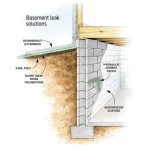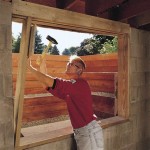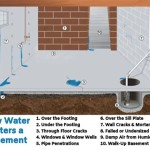How to Insulate Concrete Walls in Basement: A Comprehensive Guide
Insulating concrete walls in your basement is crucial for creating a comfortable, energy-efficient living space. By minimizing heat loss and preventing moisture issues, you can enhance the livability and longevity of your basement. Here's a comprehensive guide to help you successfully insulate your concrete walls:
Inspect and Prepare the Walls
Before you begin insulating, inspect the concrete walls for any cracks, holes, or damaged areas. Repair them using hydraulic cement or concrete patch, ensuring the surface is smooth and level.
Choose the Right Insulation
Selecting the appropriate insulation material is essential. Consider the following options:
- Fiberglass Batts: Cost-effective and easy to install, but may absorb moisture.
- Foam Board: R-value per inch is higher than fiberglass, but more expensive and challenging to cut and fit.
- Spray Foam: Provides excellent insulation and air sealing, but requires professional installation.
- Rigid Board Insulation: Similar to foam board but less expensive, offers good moisture resistance.
Install Framing
To create an air gap between the insulation and the concrete wall and facilitate ventilation, install vertical framing studs or furring strips. Use 2x4 or 2x6 lumber spaced 16 to 24 inches apart.
Insulate the Walls
Carefully fit the insulation material between the framing studs. Cut the insulation pieces to size, ensuring a snug fit. Use a utility knife for fiberglass batts and a saw for foam boards.
Seal the Joints
To prevent air leakage and moisture penetration, seal all joints between the insulation and the framing using caulk, expanding foam, or weatherstripping.
Install a Vapor Barrier
To prevent moisture from entering the insulation and damaging the concrete walls, install a vapor barrier over the insulation. Use a polyethylene film at least 6 mils thick, overlapping the edges and sealing them with tape.
Finish the Walls
Once the insulation and vapor barrier are installed, you can finish the walls according to your preference. Options include drywall, paneling, or painting over the vapor barrier.
Additional Tips:
- Wear a dust mask and appropriate safety gear during the insulation process.
- Ventilate the basement during and after insulation installation.
- Consider using a dehumidifier to control moisture levels in the basement.
- If your basement is prone to flooding, consider using waterproof insulation materials.
- Hire a qualified professional for spray foam insulation installation.

How To Insulate A Basement Wall Greenbuildingadvisor

How To Insulate Your Basement S Concrete Walls The Seattle Times

Three Ways To Insulate A Basement Wall Greenbuildingadvisor

Doe Building Foundations Section 2

Insulation For A Conditioned Basement Greenbuildingadvisor

How To Insulate A Basement Wall Greenbuildingadvisor Insulating Walls Insulation Construction

How To Insulate Your Basement Like A Pro

Doe Building Foundations Section 2

Inorganic Basement Wall Panels In Stamford Norwalk West Hartford By Expert Contractors To Beautiful Insulated

How To Insulate Basement Walls True Value
See Also








